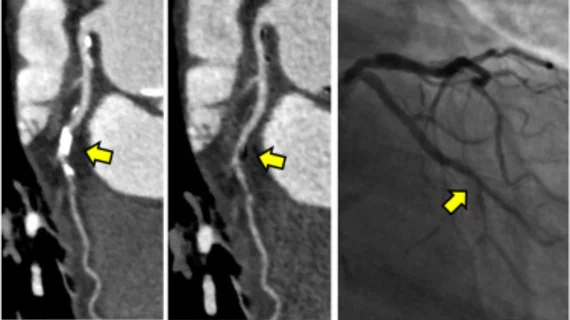Subtraction boosts CCTA accuracy, even in the presence of extensive calcium
New research is highlighting the benefits of subtraction coronary computed tomographic angiography (CCTA), citing improved diagnostic accuracy for identifying coronary stenosis [1].
CCTA is commonly used for patients with suspected coronary artery disease but can sometimes yield inconsistent results due to the artifacts of coronary artery calcium (CAC). This is especially problematic in patients with severe CAC.
Subtraction CCTA has been shown to eliminate some of these artifacts in various scenarios in the past, but most recently researchers found that it can significantly improve diagnostic accuracy in the presence of extensive calcium deposits.
The new research was published on Dec. 29 in Academic Radiology.
“The development of subtraction CCTA (CCTAsub) has been reported to be valuable for eliminating the artifacts by subtracting non-contrast images from contrast images, leaving the calcification or stents removed,” corresponding author of the paper Liming Xia MD, PhD, from the Department of Radiology at Tongji Hospital in China, and co-authors explained.
Xia and colleagues analyzed the cases of 180 patients with coronary calcified plaques for the study. Each patient underwent both coronary CT angiography and invasive coronary angiography (ICA) before being divided into three groups based on their calcification scores: group A (low to moderate, < 400), group B (high, 400-999), and group C (very high, ≥ 1000).
On a per-segment basis, subtraction improved the diagnostic accuracy for identifying ≥ 70% coronary stenosis for groups B and C. For those same groups, per-segment AUC was also found to be significantly higher for identifying ≥ 50% coronary stenosis with subtraction, but no notable differences were observed in group A.
The researchers found the results yielded via subtraction CCTA to be similar to those produced by ICA in assessing stenosis grading. They suggested that these findings could better instruct which patients would benefit from subtraction in clinical practice.
The study abstract is available here.

